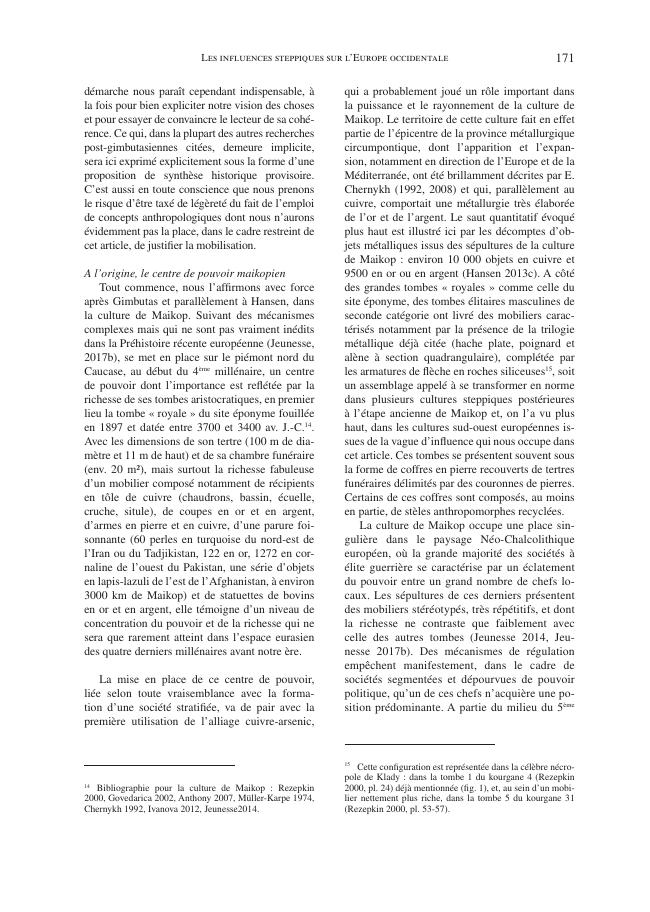Les influences steppiques sur l'Europe occidentale : une première vague antérieure à l'impact Yamnaja?
P. 161-180
The idea that influences from Eastern Europe had a strong impact on the history of Central and Western Europe during recent prehistory has attracted renewed interest over the past fifteen years. It was initially based on innovative research carried out using traditional archaeological methods, before being reinforced by the first major work carried out in the field of palaeogenetics. The latter has clearly demonstrated the importance of migratory movements of steppe origin in the historical transformations that accompanied the formation and diffusion of the Beaker cultures in the 3rd millennium. However, it is difcult to deny that the emergence of the social and ideological changes supposedly stemming from these movements in some regions precede the formation of the Corded Ware culture by more than half a millennium.
These actually appeared in the middle of the 4th millennium in central Italy (Rinaldone) before spreading to several other regions of the western Mediterranean between 3400 and 3000. The changes taking place demonstrate a clear break with the different cultural substrates affected, marked by the simultaneous appearance of a whole series of innovations. These map out a new conguration that has no equivalent except in the Maikop culture, which developed on the northern foothills of the Caucasus between 3900 and 3000 cal BC. The hypothesis we defend in this article is that it is in this culture that we must seek the origin of the upheavals that the Western Mediterranean experienced in the second half of the 4th millennium and that, consequently, the changes caused by the territorial expansion of the Yamnaja culture at the beginning of the 3rd millennium is merely one episode within a long-term phenomenon whose first manifestations date from the middle of the previous millennium. [Publisher's text]
-
Articoli dello stesso fascicolo (disponibili singolarmente)
-
Informazioni
Codice DOI: 10.32097/1123
ISSN: 2282-457X



